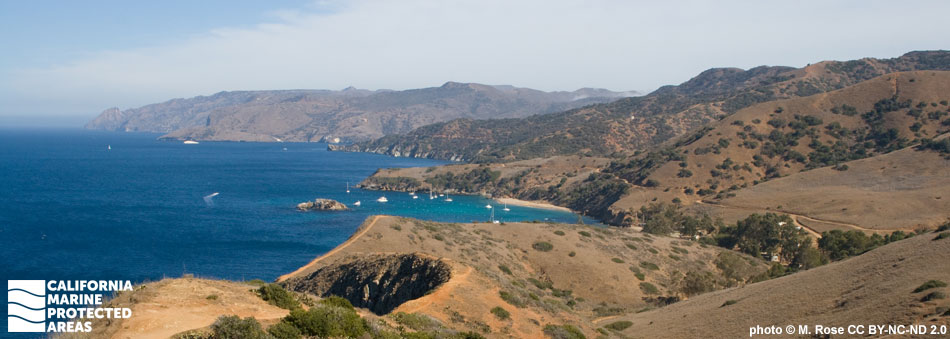
Overview
Arrow Point to Lion Head Point State Marine Conservation Area (SMCA) is located northwest of the town of Two Harbors along the northeastern side of Santa Catalina Island. The SMCA covers a narrow band of nearshore marine habitat nearly three miles long, the greatest length of protected shoreline on the island.
This marine protected area (MPA) covers a little more than half a square mile to depths of around 250 feet, and features sandy beaches, rocky shores, sandy and rocky seafloor, surfgrass beds, and kelp forests. Bays and coves dot the coastline, providing mooring and anchorage sites for boaters. Within the MPA, recreational anglers and spear fishermen can fish in accordance with current regulations, however no invertebrates, including lobster, abalone, crabs, and rock scallops, may be taken.
The habitats and associated wildlife in this MPA are quite diverse. Sheep crab scuttle along the sandy seafloor, while large spiny lobster and octopi can be spotted amongst the rocky reefs. Kelp bass and señoritas move through kelp, while pipefish swim through the surfgrass beds lining the ocean floor.
Regulations
It is unlawful to injure, damage, take, or possess any living, geological, or cultural marine resource, EXCEPT:
Recreational take of marine plants and finfish is allowed. Recreational take of invertebrates is prohibited. All commercial take is allowed in accordance with current regulations.
California Code of Regulations Title 14, Section 632(b)(123)(opens in new tab)
Quick Facts
MPA size: 0.65 square miles
Shoreline span: 2.9 miles
Depth range: 0 to 259 feet
Habitat composition*:
- Rock: 0.22 square miles
- Sand/mud: 0.55 square miles
*Habitat calculations are based on three-dimensional area and may exceed the total MPA area listed above.